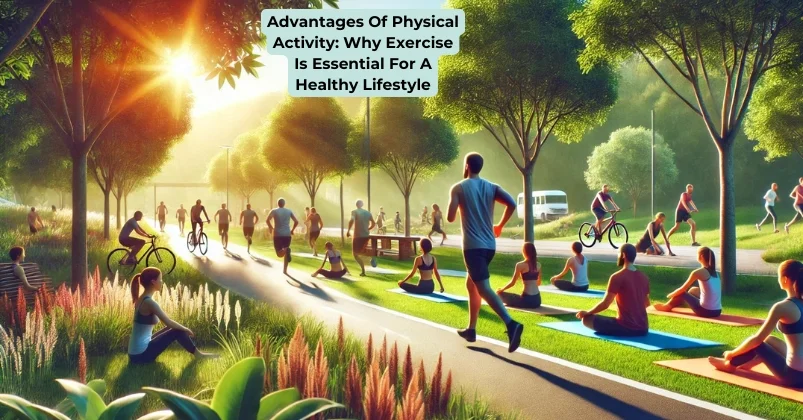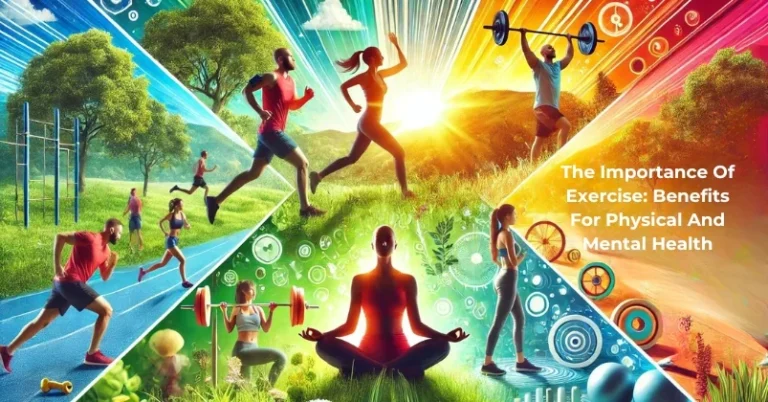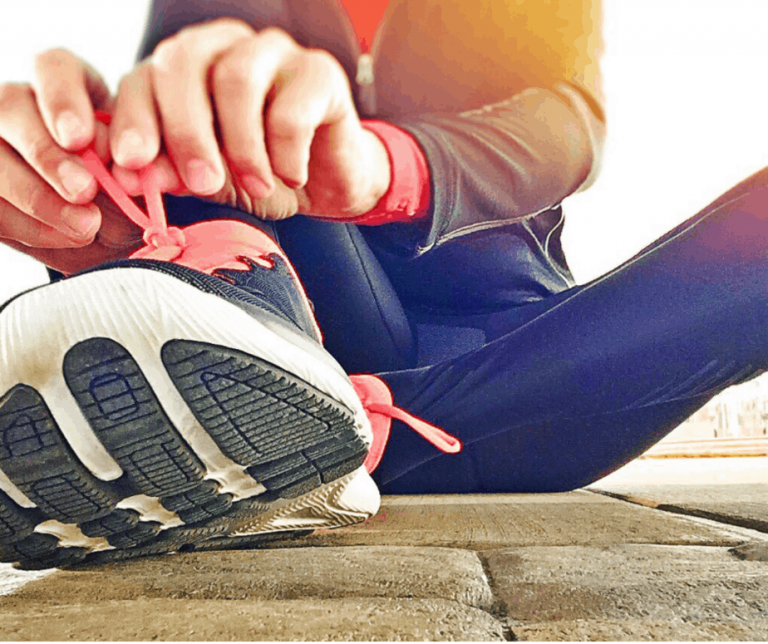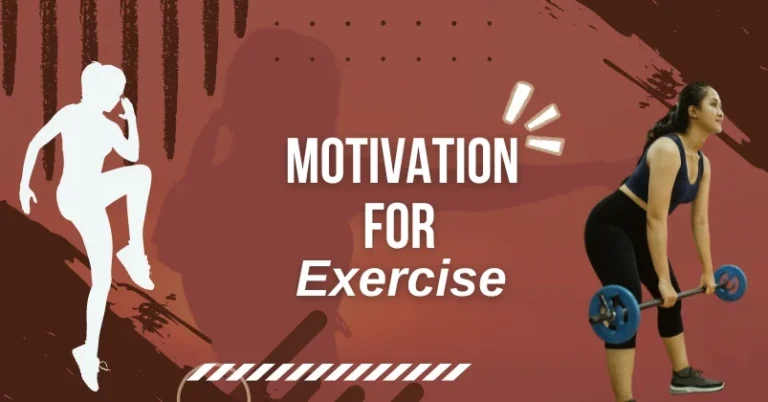Advantages of Physical Activity: Why Exercise Is Essential for a Healthy Lifestyle
Physical activity is a crucial aspect of a healthy lifestyle and has numerous benefits for both physical and mental well-being. Engaging in regular physical activity can help prevent chronic diseases, improve mood, boost energy levels, and promote better sleep. Additionally, physical activity can be a fun way to spend time with friends and family while improving overall health.
Physical activity has been linked to a variety of health benefits, including a reduced risk of heart disease, stroke, and diabetes. Regular exercise can also help maintain a healthy weight, reduce inflammation, and improve bone density. Moreover, physical activity has been shown to improve mental health by reducing symptoms of depression and anxiety and improving overall emotional well-being.
As we age, physical activity becomes even more important for maintaining good health. Regular exercise can help prevent age-related declines in muscle mass and bone density, reduce the risk of falls, and improve overall mobility. Furthermore, engaging in physical activity can help maintain cognitive function and reduce the risk of dementia. With all the benefits that physical activity provides, it's essential to make it a part of your daily routine.
Key Takeaways
- Regular physical activity can prevent chronic diseases and improve overall health.
- Engaging in physical activity can improve mental well-being and cognitive function.
- Physical activity becomes even more important with age for maintaining good health.
Physical Activity And Health
Regular physical activity has numerous health benefits. In this section, we will explore the impact of physical activity on overall health and its role in disease prevention.
Impact On Overall Health
Physical activity can have a positive impact on overall health. It can help maintain a healthy weight, improve heart health, and reduce the risk of chronic diseases such as type 2 diabetes and some types of cancer. According to the National Institute of Diabetes and Digestive and Kidney Diseases (NIDDK), physical activity can also help reduce the risk of stroke and improve mental health.
Studies have shown that physical activity can also improve sleep quality, boost energy levels, and reduce feelings of depression and stress. Additionally, physical activity can help maintain strong bones and muscles, which can reduce the risk of falls and fractures, especially in older adults.
Role In Disease Prevention
Physical activity plays a critical role in disease prevention. Regular physical activity can help prevent and manage a variety of chronic diseases, including heart disease, type 2 diabetes, and many types of cancer.
According to the World Health Organization (WHO), physical activity can reduce the risk of heart disease and stroke by up to 35%. Additionally, physical activity can help prevent and manage type 2 diabetes by improving insulin sensitivity and blood glucose control.
Physical activity can also reduce the risk of many types of cancer, including breast, colon, and lung cancer. According to the Centers for Disease Control and Prevention (CDC), physical activity can reduce the risk of colon cancer by up to 50%.
In conclusion, physical activity has numerous health benefits, including reducing the risk of chronic diseases, improving heart health, and reducing feelings of depression and stress. By incorporating physical activity into our daily routines, we can improve our overall health and well-being.
Physical Activity And Mental Well-Being
Regular physical activity has numerous benefits for both the mind and the body. In this section, we will discuss how physical activity can improve mental well-being, specifically by reducing stress and anxiety and improving mood and cognitive function.
Reducing Stress And Anxiety
Physical activity is an effective way to reduce stress and anxiety. When you exercise, your body releases endorphins, which are natural chemicals that can help to reduce stress and improve mood. Exercise also helps to reduce the levels of cortisol, which is a hormone that is associated with stress. By reducing cortisol levels, physical activity can help to reduce feelings of anxiety and promote a sense of calm.
Improving Mood And Cognitive Function
Physical activity has been shown to have a positive impact on mood and cognitive function. Studies have found that regular exercise can help to reduce symptoms of depression and improve overall mood. Additionally, physical activity has been shown to improve cognitive function, including memory, attention, and judgment skills.
Research has also shown that physical activity can help to improve brain health and cognitive function in older adults. Exercise has been shown to increase blood flow to the brain, which can help to improve cognitive function. Additionally, physical activity has been shown to reduce the risk of developing dementia and other cognitive disorders.
In summary, physical activity has numerous benefits for mental well-being. Regular exercise can help to reduce stress and anxiety, improve mood, and enhance cognitive function. By incorporating physical activity into your daily routine, you can improve your overall mental health and well-being.
Physical Activity And Aging
Regular physical activity is essential for healthy aging. Exercise can help older adults prevent falls, maintain independence, and improve physical function.
Preventing Falls And Improving Balance
Falls are a significant health concern for older adults. According to the Centers for Disease Control and Prevention, one in four adults over the age of 65 falls each year. Physical activity can help prevent falls by improving balance and muscle strength.
Balance exercises can include standing on one foot, heel-to-toe walking, and Tai Chi. Strength training exercises can include lifting weights or using resistance bands. These exercises can help improve muscle strength, which can reduce the risk of falls.
Maintaining Independence And Physical Function
Physical activity can help older adults maintain their independence and physical function. Regular exercise can delay or prevent disabilities, such as osteoporosis or dementia. It can also improve physical function, allowing older adults to perform daily activities, such as bathing or dressing, with greater ease.
The key to maintaining independence and physical function is to engage in regular physical activity. The American Heart Association recommends that older adults get at least 150 minutes of moderate-intensity aerobic activity each week. This can include activities such as brisk walking, cycling, or swimming.
In conclusion, physical activity is essential for healthy aging. It can help prevent falls, delay or prevent disabilities, and improve physical function. Older adults should engage in regular physical activity to maintain their independence and overall health.
Types Of Physical Activities
Physical activities can be broadly classified into three categories: aerobic activities, muscle-strengthening activities, and flexibility and balance activities. Each type of activity offers unique benefits to the body.
Aerobic Activities
Aerobic activities, also known as cardio, are exercises that increase the heart rate and breathing rate. These activities help improve cardiovascular health, increase endurance, and boost metabolism. Examples of aerobic activities include:
- Walking
- Running
- Cycling
- Dancing
- Swimming
- Soccer
Aerobic activities can be performed indoors or outdoors, making them a versatile option for people of all ages and fitness levels. They can be done at a gym, in a park, or even in the comfort of your own home.
Muscle-Strengthening Activities
Muscle-strengthening activities, also known as resistance training, are exercises that work the muscles against resistance. These activities help build and maintain muscle mass, increase bone density, and improve balance and coordination. Examples of muscle-strengthening activities include:
- Weightlifting
- Resistance band exercises
- Push-ups and pull-ups
- Squats and lunges
- Yoga
Muscle-strengthening activities can be done at a gym or home with minimal equipment. These activities are especially important for older adults, as they can help prevent age-related muscle loss and reduce the risk of falls.
Flexibility And Balance Activities
Flexibility and balance activities are exercises that improve range of motion, flexibility, and balance. These activities help reduce the risk of injury and improve posture. Examples of flexibility and balance activities include:
- Yoga
- Pilates
- Tai chi
- Stretching
- Gardening
Flexibility and balance activities can be done at home or in a class setting. They are especially important for older adults, as they can help improve mobility and reduce the risk of falls.
Incorporating a variety of physical activities into your routine can provide numerous health benefits. Whether you prefer aerobic activities, muscle-strengthening activities, or flexibility and balance activities, there are plenty of options to choose from.
Physical Activity And Weight Management
Regular physical activity is one of the most effective ways to maintain a healthy weight and prevent weight gain. Physical activity burns calories, and when combined with a healthy diet, creates a calorie deficit that can result in weight loss. In this section, we will discuss the benefits of regular exercise and the role it plays in weight loss and maintenance.
Benefits Of Regular Exercise
Physical activity has numerous benefits for overall health and well-being. According to the CDC, regular physical activity can:
- Reduce the risk of chronic diseases such as heart disease, stroke, and diabetes
- Improve mental health and mood
- Strengthen bones and muscles
- Improve sleep quality
- Increase chances of living longer
Role In Weight Loss And Maintenance
Physical activity plays a crucial role in weight loss and maintenance. According to the Physical Activity Guidelines for Americans, adults should aim for at least 150 minutes of moderate-intensity aerobic activity or 75 minutes of vigorous-intensity aerobic activity per week, along with muscle-strengthening activities at least two days per week.
When losing weight, a combination of reducing caloric intake and increasing physical activity is the most effective approach. Physical activity burns calories and helps to preserve muscle mass, which is important for maintaining a healthy metabolism. In addition, regular physical activity can help prevent weight regain after weight loss.
In summary, regular physical activity is essential for maintaining a healthy weight and preventing weight gain. It has numerous benefits for overall health and well-being, including reducing the risk of chronic diseases and improving mental health. When combined with a healthy diet, physical activity can help create a calorie deficit for weight loss and help maintain weight loss over time.
Planning For Physical Activity
Regular exercise can help you feel better and improve your overall health. But, it can be challenging to get started and stay motivated. Planning for physical activity can help you stay on track and achieve your goals. Here are some tips for setting realistic goals and incorporating activity into everyday life.
Setting Realistic Goals
Setting realistic goals is an essential step in planning for physical activity. Consider your current fitness level, schedule, and preferences when setting goals. Start with small, achievable goals and gradually increase the intensity and duration of your workouts.
Here are some examples of realistic goals:
- Walking for 30 minutes, three times a week
- Taking a yoga class once a week
- Jogging for 20 minutes, twice a week
Tracking your progress can help you stay motivated and see the results of your hard work. Use a fitness app, journal, or spreadsheet to track your workouts and set new goals.
Incorporating Activity Into Everyday Life
Incorporating physical activity into your everyday life can help you stay active and meet your fitness goals. Here are some tips for incorporating activity into your daily routine:
- Take the stairs instead of the elevator
- Walk or bike to work
- Do squats or lunges while brushing your teeth
- Take a walk during your lunch break
Find activities that you enjoy and make them a part of your daily routine. This can help you stay motivated and make physical activity a habit.
Planning for physical activity can help you achieve your fitness goals and improve your overall health. Start with small, achievable goals and incorporate activity into your everyday life. With time and dedication, you can make regular exercise a part of your lifestyle.
Physical Activity And Sleep
Physical activity has numerous benefits for overall health and well-being, including better sleep quality. According to the Sleep Foundation, regular exercise can help people fall asleep faster, stay asleep longer, and experience deeper sleep cycles.
Research shows that people who engage in regular physical activity have a lower risk of developing sleep disorders like insomnia and sleep apnea. Additionally, exercise can help alleviate daytime sleepiness and, for some people, reduce the need for sleep medications.
It's important to note that the timing of physical activity can also impact sleep quality. While exercise is generally beneficial for sleep, working out too close to bedtime can make it harder to fall asleep. This is because exercise increases heart rate and body temperature, which can make it difficult to wind down and relax.
When it comes to the type of physical activity, there's no one-size-fits-all approach. Different types of exercise may have different effects on sleep quality, and it's important to find an activity that works for your body and lifestyle. Some people find that low-impact activities like yoga or stretching help them relax and unwind before bed, while others prefer more vigorous exercise like running or weightlifting.
Overall, engaging in regular physical activity can have a positive impact on sleep quality and duration. It's important to find an activity that works for you and to avoid exercising too close to bedtime to ensure a good night's rest.
Physical Activity And Sexual Health
Physical activity has numerous benefits for overall health, including sexual health. Engaging in regular exercise can improve blood flow and circulation, which can lead to improved sexual function in both men and women.
For men, physical activity can help reduce the risk of erectile dysfunction. One study found that men who exercised regularly had a 30% lower risk of developing erectile dysfunction compared to men who did not exercise. Exercise also helps improve cardiovascular health, which is important for maintaining healthy sexual function.
For women, regular exercise can increase sexual desire and improve sexual function. Exercise can also help reduce stress and anxiety, which can negatively impact sexual function.
In addition to the physical benefits, regular exercise can also improve self-confidence and body image, which can lead to improved sexual satisfaction.
It is important to note that excessive exercise or overtraining can have negative effects on sexual function. It is important to find a balance and engage in moderate physical activity to reap the benefits of sexual health.
Overall, incorporating regular physical activity into your routine can have numerous benefits for sexual health in both men and women.
Physical Activity And Skin Health
Physical activity has numerous benefits for the body, including improving skin health. Exercise increases blood flow, which helps to nourish skin cells and keep them healthy. Here are some ways physical activity can benefit your skin:
- Reduces acne: Exercise can help reduce acne by regulating hormone levels and reducing stress, a common trigger for breakouts. However, it is important to shower and cleanse your skin after exercise to prevent sweat and bacteria buildup.
- Improves skin elasticity: Regular exercise can help improve skin elasticity by promoting collagen production, which helps to keep skin firm and supple.
- Reduces wrinkles: Exercise can also help reduce the appearance of wrinkles by increasing blood flow and oxygen to the skin, which helps to improve skin texture and tone.
- Promotes healthy skin cells: Exercise increases the delivery of nutrients and oxygen to skin cells, which helps to promote healthy cell turnover and renewal.
While physical activity can benefit skin health, it is important to protect your skin from damage while exercising. Here are some tips to keep your skin healthy during physical activity:
- Wear sunscreen: Protect your skin from harmful UV rays by wearing sunscreen with at least SPF 30 before exercising outdoors.
- Stay hydrated: Drinking enough water before, during, and after exercise helps to keep skin hydrated and healthy.
- Wear breathable clothing: Choose clothing made from breathable fabrics to allow sweat to evaporate and prevent skin irritation.
Overall, regular physical activity can help improve skin health by increasing blood flow, promoting collagen production, and reducing stress. However, it is important to protect your skin from damage while exercising to maximize these benefits.
Overcoming Barriers To Physical Activity
Regular physical activity is essential for maintaining good health and preventing chronic diseases such as heart disease, type 2 diabetes, and obesity. Despite the numerous benefits of physical activity, many people struggle to incorporate it into their daily lives due to various barriers. Here are some ways to overcome common barriers to physical activity.
Addressing Physical Limitations
Physical limitations such as pain, arthritis, and fatigue can make it difficult to engage in physical activity. However, with the guidance of a healthcare professional, many people with physical limitations can still engage in physical activity. For example, low-impact exercises such as swimming, yoga, and walking can be beneficial for individuals with joint pain or arthritis. Resistance training can also help improve muscle strength, which can alleviate pain and improve mobility.
Dealing With a Lack Of Motivation
Lack of motivation is another common barrier to physical activity. However, there are several ways to overcome this barrier. Setting realistic goals and tracking progress can help individuals stay motivated and see the benefits of physical activity. Joining a group fitness class or finding a workout buddy can also provide accountability and motivation. Additionally, finding enjoyable physical activities can help individuals maintain a consistent exercise routine.
Other barriers
In addition to physical limitations and lack of motivation, there are other barriers to physical activity that individuals may face. For example, inactivity and smoking can make it difficult to engage in physical activity. However, quitting smoking and increasing daily activity levels can help individuals improve their overall health and make physical activity easier.
In conclusion, physical activity is crucial for maintaining good health, but many people face barriers to incorporating it into their daily lives. By addressing physical limitations, finding motivation, and overcoming other barriers, individuals can improve their health and well-being through regular physical activity.
FAQs
Physical activity can have numerous benefits for both physical and mental health. Some of the benefits include improved cardiovascular health, increased muscle strength and endurance, improved bone density, reduced risk of chronic diseases such as diabetes, obesity, and heart disease, and improved mental health.
According to Stylecraze, some of the 20 benefits of physical activity include improved heart health, reduced risk of chronic diseases, improved mental health, better sleep, improved brain function, increased energy levels, and improved overall quality of life.
The advantages of physical activity include improved physical and mental health, reduced risk of chronic diseases, and improved quality of life. The disadvantages of physical activity include the risk of injury, overtraining, and the time commitment required to maintain a regular exercise routine.
According to the CDC, some of the 7 benefits of regular physical activity include improved brain function, reduced risk of chronic diseases, improved mood, better sleep, improved bone health, and improved overall quality of life.
Exercise is important in our daily lives because it can improve physical and mental health, reduce the risk of chronic diseases, and improve overall quality of life. Regular exercise can also help to improve sleep, reduce stress and anxiety, and increase energy levels.
Some physical benefits of exercise include improved cardiovascular health, increased muscle strength and endurance, improved bone density, and reduced risk of chronic diseases such as diabetes, obesity, and heart disease. Exercise can also help to improve balance and flexibility, reduce the risk of falls, and improve overall quality of life.








